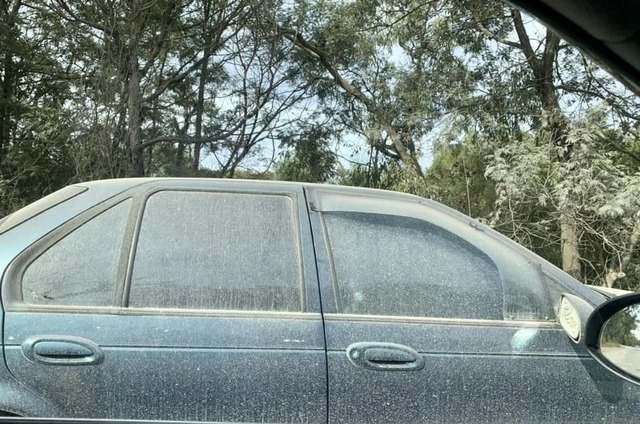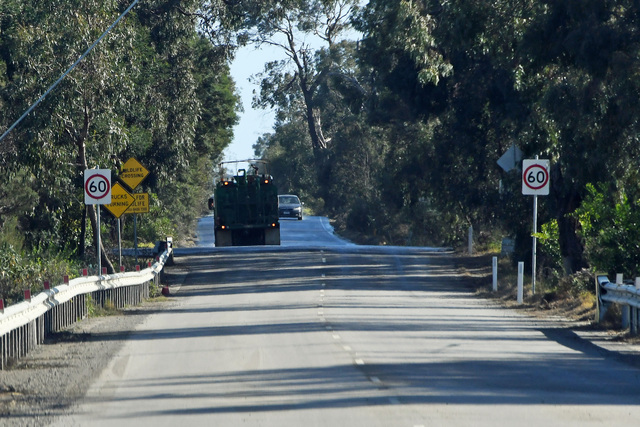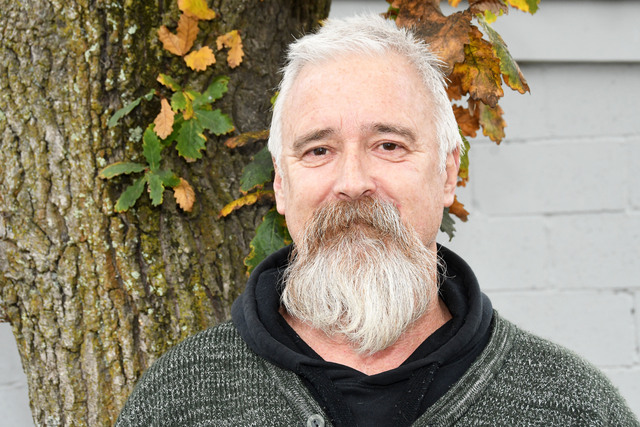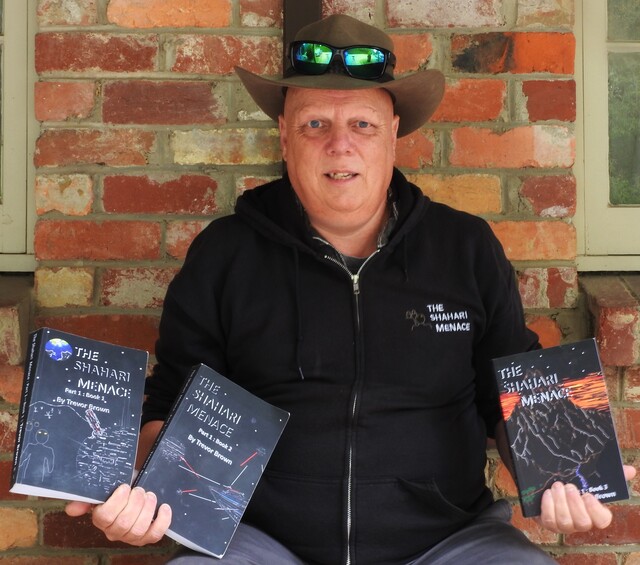Three years after the SBI landfill first came to public scrutiny for offensive odours, residents say they are still left in the dark about potentially dangerous dust drifting from the site, citing a lack of public statistics on dust monitoring.
Back in early 2022, residents near the SBI landfill in Cranbourne noted persistent rotten-egg odours linked to hydrogen sulfide gas, prompting thousands of complaints and further EPA action. Over the years, the odour has been significantly reduced, but the surrounding community have become more aware of the other impacts of the landfill activities, including the dust.
Star News first reported the dust concerns in early 2023.
At a community session by the EPA, residents raised strong concerns about respirable crystalline silica from the SBI landfill, which is known to cause silicosis, a disabling or even fatal condition.
Respirable crystalline silica is a very fine form of silica dust that is small enough to be inhaled deep into the lungs. It is a common mineral found in materials like sand, stone, concrete, and bricks. It’s often generated when materials containing silica are cut and crushed.
SBI landfill accepts solid inert waste from commercial and industrial, construction and demolition activities, and it conducts concrete crushing activities, which produce silica dust.
At the time, an EPA scientist said it was “highly unlikely,” citing past studies at similar sites and suggesting that if staff aren’t exposed, the community likely isn’t either.
But locals remained unconvinced, pointing to daily dust build-up on cars and homes, and demanded clear evidence that the air was safe.
EPA acknowledged the issue and said it would follow up, while urging residents to report visible dust alongside odour complaints.
Fast forward to July 2025, the community is still unconvinced and concerned, citing a lack of public statistics on dust monitoring, while being told the dust level was safe.
Dust still around
“From what I’ve seen, it (dust) seems to have got worse over the last couple of years,” a resident in the nearby Settlers Run estate, who preferred not to disclose their name, said.
“That is probably because they used to crush dust at the bottom of the old quarry where the landfill now is, so that’s about 60 meters below the surface. Whereas now they do it on top of the ground, so, of course, the dust is more evident.
“There are two parts of the dust. There’s the dust in the air, the air emissions and then there’s the dust that gets on the ground and it gets flushed down into the waterways.
“Residents are concerned, and they made a lot of complaints about them getting dust on their cars, on their houses. Grey dust, which is the same sort of colour that you see from the SBI that comes out on the road.”
The resident recalled that in 2023, there was a dust-coated car abandoned on Ballarto Road outside the landfill.
“It was only there for a couple of days, and it was just coated,” they said.
Residents in the local Facebook group noted that they wouldn’t expect much dust to be in the air in winter, but it was the spring-to-autumn season when they typically saw the dust around*.
Ongoing Dust Monitoring Program “late”
In April 2024, in response to community reports, the EPA requested that SBI conduct dust monitoring, including respirable silica.
A letter from the State’s Environment Minister last month has revealed that in May and June, the EPA reviewed multiple versions of the dust monitoring report and found insufficient information for an accurate public health assessment of risks to the local community. Consequently, the EPA took regulatory action.
In November 2024, the EPA issued notices to SBI requiring them to develop a dust management plan and an ongoing dust monitoring program that considers health risks, including respirable crystalline silica.
EPA received a dust management plan for the site in February this year.
SBI is installing equipment and will start its dust monitoring program, including real-time monitoring, in July this year.
The resident questioned why SBI hadn’t already had a dust management plan and believed the environment watchdog didn’t act quickly enough to enforce the dust management plan and the dust monitoring.
They cited an Environmental Audit Report from December 2022, where the expert observed “significant dust generation from concrete crushing activities occurring near the site entrance” and “minimal dust across the remaining site area” during a visit in November 2022.
The audit report for the period between 1 January 2020 and 31 July 2022 told a different story about dust, which was inspected by SBI infrequently and not daily as required before.
It was noted that dust ranging from ‘very low’ to ‘moderate’ was observed at the northern boundary in June 2020 and September 2021, and ‘low’ dust was observed at locations 7 and 8 onsite (near the landfill and quarry) during June 2020.
Dust sources were noted to be from trucks, the landfill and concrete crushing activities. SBI confirmed to the auditor by email dated 28 November 2022 that no dust complaints were received during the audit period.
The inspection records also showed that dust was not detected during inspections undertaken by SBI in October 2021 to February 2022.
“As the landfilling operations are taking place below the natural ground level, it would be anticipated that dust emissions are minimised in part due to this,” the report noted.
“The dust emissions that were observed appear to be sourced primarily from trucks on the haul road at ground level as well as from concrete crushing activities.”
The audit report recommended that dust inspections be undertaken daily at the required location.
Concerns grow amid withheld report
The resident, who has been highly engaged, also pointed out that the April 2024 dust monitoring report had not been made public, despite plans to release its key findings.
After they learned that the EPA was not satisfied with that undisclosed report and requested a dust management plan later, they found everything suspicious.
They recalled that it was mentioned in an SBI community meeting that respirable silica dust was detected at low levels.
“When I was at the meeting, they said that everything was okay. It was below the workplace threshold, and when I asked for more details, like what the readings meant, what the impact was, and whether it was totally safe, they wouldn’t answer any questions,” they said.
SBI’s May community meeting last year recorded a brief summary of the April 2024 report, including “inhalable dust concentration at 3 locations below Worksafe Australia exposure limits”, and “crystalline silica concentration at 3 locations all under APAC guideline limit”.
According to an EPA answer to a community question in November 2024, the WorkSafe safe work silica limits are based on an 8-hour exposure average, which means that you would need to be exposed to constant silica levels above the limits to be at risk, i.e. standing outside breathing high levels of silica for 8 hours.
EPA Air Pollution Assessment Criteria is based on a 24-hour exposure limit that does consider cumulative impact.
The resident said, however, there is currently no national or state-level regulation in Australia that sets a specific safe limit for respirable crystalline silica in ambient (outdoor) residential air.
“It’s like a big grey area,” they said.
They pointed out that a lot of people in the vicinity work from home, which means they could be affected.
“We went through another spring, summer, autumn of dust without what’s showing in the air,” they said.
EPA statement
When inquired, an EPA spokesperson said that while EPA had received only a handful of complaints about dust escaping the SBI site, this year, there was additional action that SBI has committed to so that any dust issues could be identified and addressed as early as possible.
“In March this year, following an inspection, EPA was able to confirm SBI’s compliance with two improvement notices, which also included the development of a dust management plan,” they said.
“This will include the installation of new dust monitoring equipment and a commitment from SBI to share the results of that monitoring with the community.
“We will continue to monitor SBI and act if they become non-compliant and have been actively working in the area recently, testing for noise and odour issues.”
SBI landfill was contacted.
*Reports on dust issues state that dust levels can fluctuate significantly with weather conditions. Wind can carry particles over long distances, dry temperatures increase dust lift-off, and atmospheric pressure can trap pollutants close to the ground.








